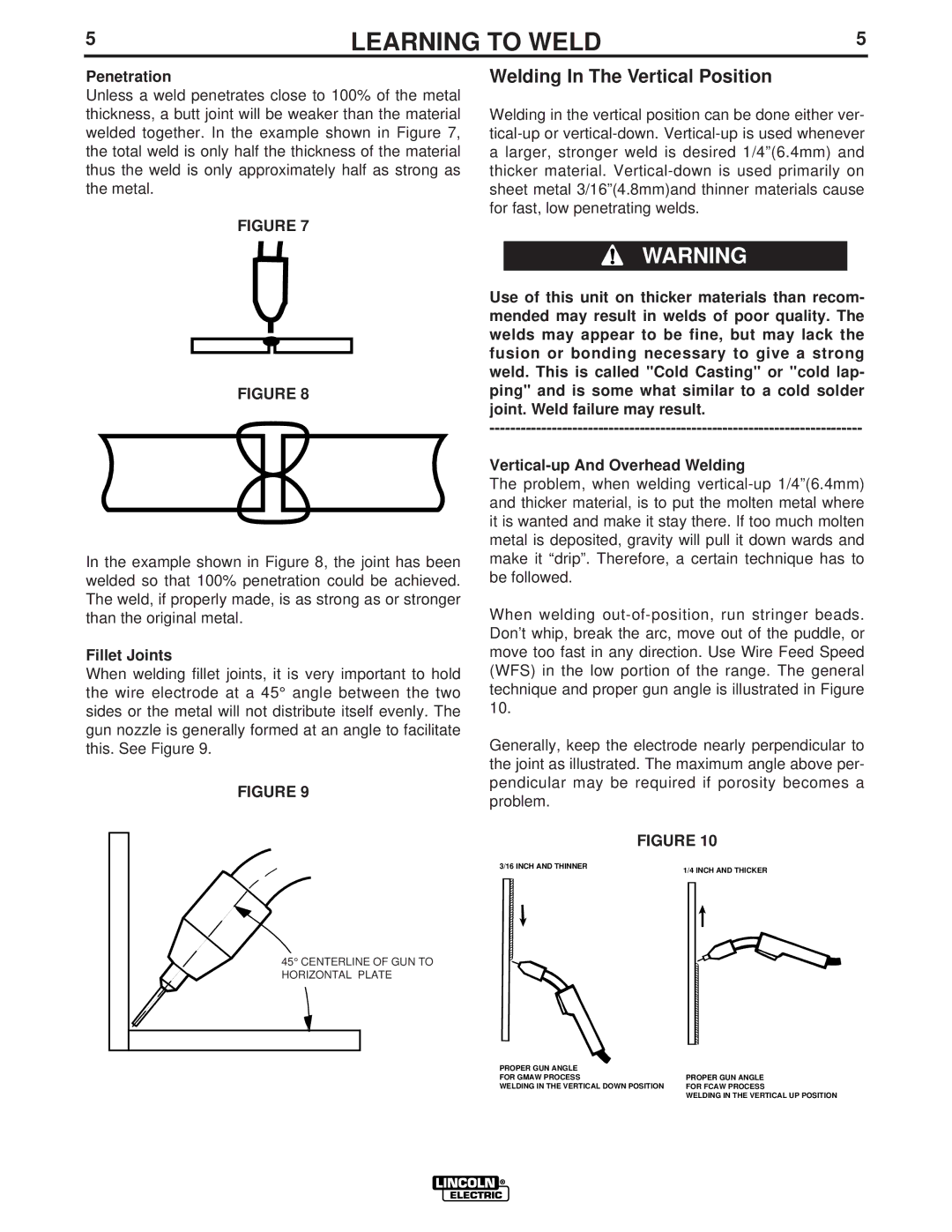
5 | LEARNING TO WELD | 5 |
|
|
|
Penetration
Unless a weld penetrates close to 100% of the metal thickness, a butt joint will be weaker than the material welded together. In the example shown in Figure 7, the total weld is only half the thickness of the material thus the weld is only approximately half as strong as the metal.
FIGURE 7
FIGURE 8
In the example shown in Figure 8, the joint has been welded so that 100% penetration could be achieved. The weld, if properly made, is as strong as or stronger than the original metal.
Fillet Joints
When welding fillet joints, it is very important to hold the wire electrode at a 45° angle between the two sides or the metal will not distribute itself evenly. The gun nozzle is generally formed at an angle to facilitate this. See Figure 9.
FIGURE 9
45° CENTERLINE OF GUN TO HORIZONTAL PLATE
Welding In The Vertical Position
Welding in the vertical position can be done either ver-
alarger, stronger weld is desired 1/4”(6.4mm) and thicker material.
WARNING
Use of this unit on thicker materials than recom- mended may result in welds of poor quality. The welds may appear to be fine, but may lack the fusion or bonding necessary to give a strong weld. This is called "Cold Casting" or "cold lap- ping" and is some what similar to a cold solder joint. Weld failure may result.
The problem, when welding
When welding
Generally, keep the electrode nearly perpendicular to the joint as illustrated. The maximum angle above per- pendicular may be required if porosity becomes a problem.
FIGURE 10
3/16 INCH AND THINNER
1/4 INCH AND THICKER
PROPER GUN ANGLE |
|
FOR GMAW PROCESS | PROPER GUN ANGLE |
WELDING IN THE VERTICAL DOWN POSITION | FOR FCAW PROCESS |
| WELDING IN THE VERTICAL UP POSITION |
